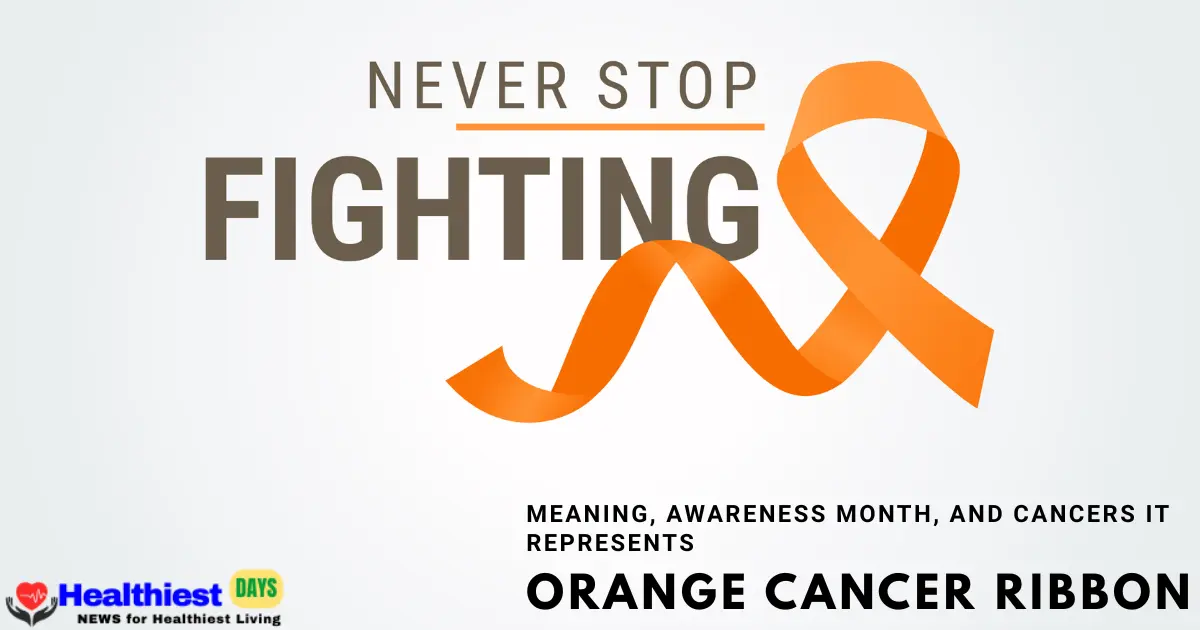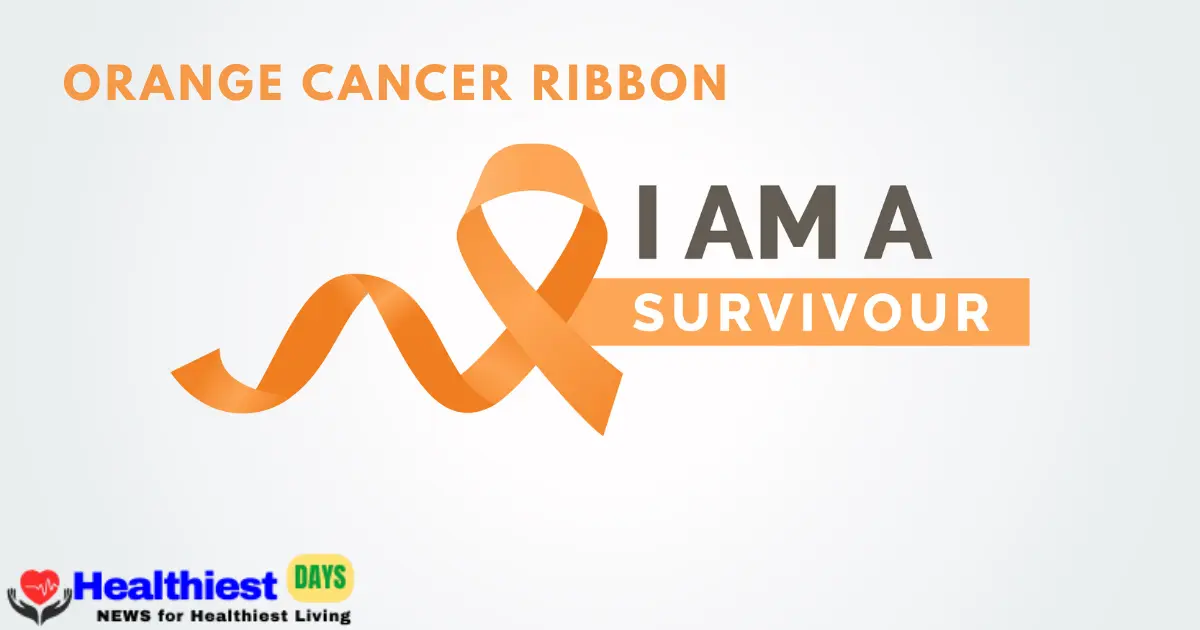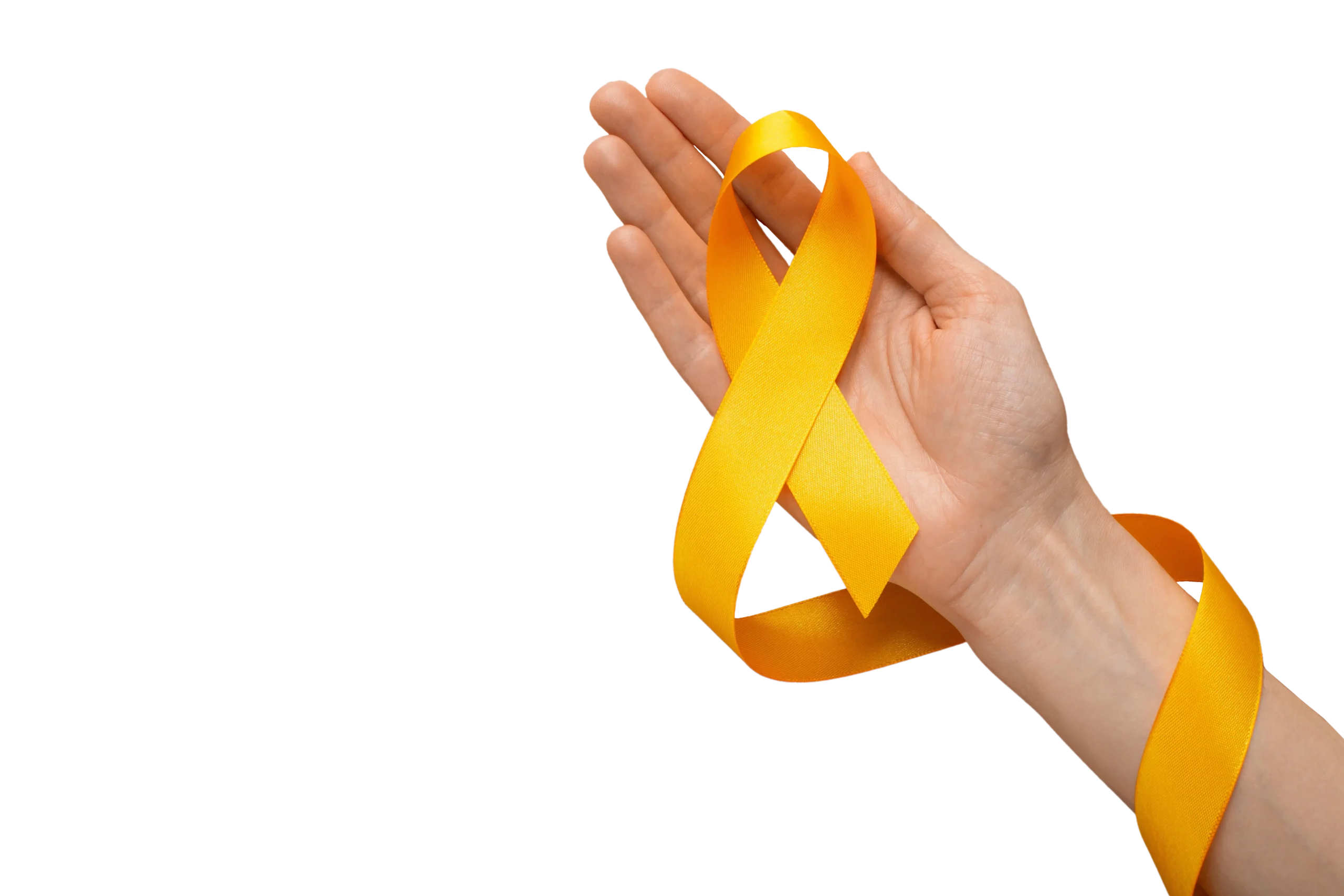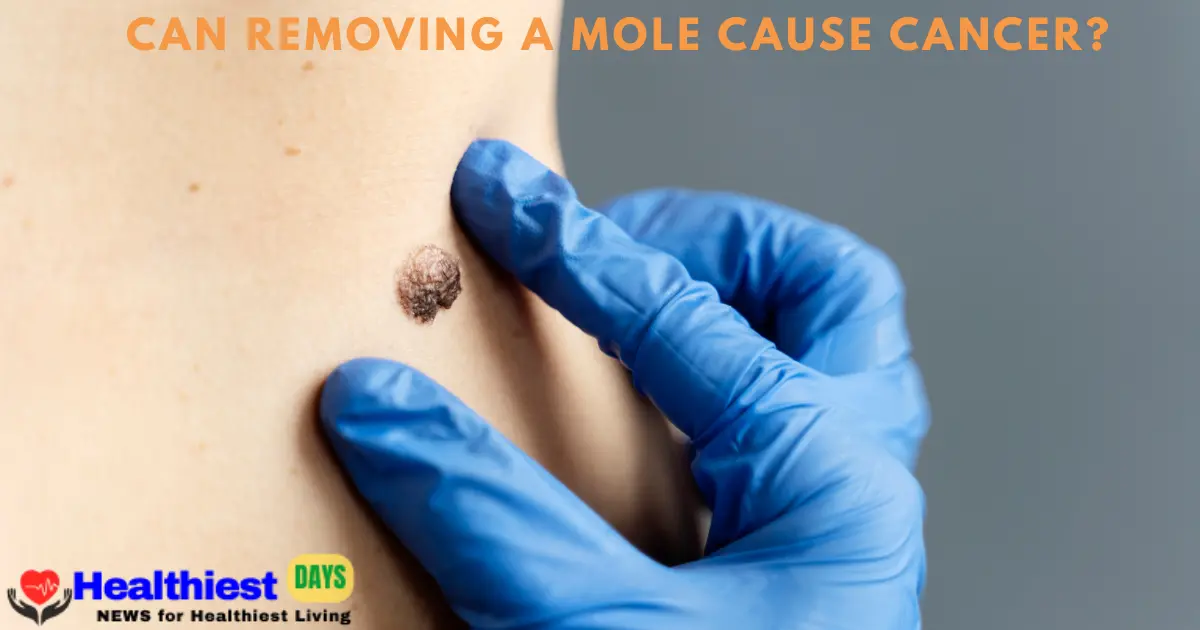Orange Cancer Ribbon – Meaning, Awareness Month, and Cancers It Represents entirely

Introduction: What Does the Orange Cancer Ribbon Mean?
If you’ve seen an orange cancer ribbon on a lapel, a social media profile, or on some other social media platforms, or at a fundraising event, you may have wondered about its meaning. Considering the world of cancer awareness ribbons, where the orange colour carries powerful symbolism or a sense of association with cancer by thoroughly representing not just one, but multiple causes and repercussions, also speaks volumes about cancer types. It’s a vivid sign of hope, unity, and advocacy. It also reminds us of the most urgent need for early detection of cancer, research funding for its cure, and patient support to bear the treatment with courage.
In this guide, we’ll explore the following aspects clearly:
- What the orange cancer ribbon stands for ( meaning )
- The cancers and causes it represents, and the way it means
- It’s awareness month on clear grounds
- History and symbolism
- How to get involved in awareness campaigns
1. The Meaning Behind the Orange Cancer Ribbon
The orange awareness ribbon has a dual role — it’s used both in cancer awareness and in other causes such as self-harm awareness and leukemia support. In cancer advocacy, orange most prominently stands for:
- Leukemia, a clear deficiency of red blood cells
- Kidney cancer( happens in the kidneys)
- Multiple myeloma (in some regions)
- Skin cancer awareness (in combination with other colors)
Beyond specific kinds of cancers, the orange ribbon can also symbolize general cancer survivorship and the shared fight against all types of cancers.

2. Cancers Represented by the Orange Ribbon
Leukemia
- Awareness Month: September
- Why orange? The bright, energetic color symbolizes determination and strength in fighting this blood cancer by raising slogans for its elimination and raising awareness among the general public.
- Key facts: Leukemia basically affects the blood and bone marrow, and it also spreads awareness efforts focused on increasing donor registrations for bone marrow transplants.
Kidney Cancer
- Awareness Month: March is the month of awareness for kidney cancer.
- Why is orange associated with it? It represents energy and hope, inspiring advocacy in terms of better screening methodologies and treatment options.
- Key facts include kidney cancer affecting more than 81,610 people annually in the U.S. (American Cancer Society data and statistical analysis).
Multiple Myeloma
- Awareness Month: March is the month of awareness in this regard.
- Why orange? It’s generally used alongside burgundy to show unity for those battling this cancer of the plasma cells.
3. Awareness Months Linked to the Orange Ribbon
| Cancer Type | Awareness Month | Ribbon Color | Cause Focus |
| Leukemia | September | Orange | Research, treatment, donor drives |
| Kidney Cancer | March | Orange | Early detection at early levels, treatment funding |
| Multiple Myeloma | March | Orange/Burgundy | Patient support, research |
| Self-Harm Awareness | March 1 | Orange | Mental health awareness |
Pro Tip for Advocacy: Wearing an orange ribbon during these months — or year-round comes with a purpose to keep the cause visible and sparks conversations.
4. Symbolical meanings of the Color Orange in Cancer Awareness
The color orange is often symbolically associated or designed with energy, enthusiasm, and determination. In the context of cancer, the following are the significant symptoms:
- It uplifts patients battling daily challenges and keeps them alive to fight against cancer confidently.
- It inspires hope for better treatment methods by allowing recent advances in cancer treatment procedures.
- It unites supporters across communities, and causes are expressed only so that the entire community may get involved.
Color psychology suggests that orange colour basically promotes feelings of warmth and encouragement with inclusivity, both of crucial in patient and survivor support networks.
5. How to Show Support with the Orange Cancer Ribbon
Wear the Ribbon
- On clothing, hats, or bags, or on cloths to show awareness of cancer.
- A pin or silicone wristband also does the same thing to spread awareness for global interaction about cancer recognition.
- As a profile picture frame during awareness months, include displaying awareness through one’s profile, as social platforms contain enough power to spread info in a short time.
Donate or Fundraise

- It also supports organizations like the Leukemia & Lymphoma Society or the Kidney Cancer Association.
- It inclusively adds host charity runs, bake sales, or online fundraisers.
Share Educational Resources
- It is being used on social media to post facts about the cancers linked to the orange ribbon.
- It also encourages friends and family to learn about early detection.
Participate in Events
- It generally joins Light the Night Walks for leukemia awareness.
- It can attend local kidney cancer conferences or survivor meet-ups.
6. Survivor Stories & Real-Life Impact
It is also noted that hearing from survivors can be one of the most powerful motivators for awareness.
Example:
Emily, a 29-year-old leukemia survivor from Texas, says:
“When I saw a crowd wearing orange ribbons during my treatment, I knew I wasn’t alone. That hope carried me through some of my hardest days.”
These stories highlight why ongoing advocacy and visibility matter so much on clear grounds that you can beat cancer with knowledge, support, and proper treatment.
7. History of the Orange Cancer Ribbon
In a net shell, cancer ribbons as a whole gained recognition in the early 1990s, and the orange ribbon became prominent in leukemia advocacy campaigns and common public awareness. Over time, it was adopted by other cancer awareness groups and mental health organizations, giving it multi-cause visibility.
8. Frequently Asked Questions
1. What does the orange cancer ribbon mean?
It primarily represents leukemia, kidney cancer, and multiple myeloma awareness, but is also linked to self-harm prevention, so it can be combatted with courage easily.
2. When is the orange ribbon worn?
It’s worn year-round, but especially during related awareness, which consists of several months like March and September.
3. Does the orange ribbon represent more than one cancer?
Yes, it generally represents multiple cancer types and even non-cancer causes.
4. Can I wear the orange ribbon if I’m not a survivor?
It strongly supports to caregivers, and advocates that they are encouraged to wear it.
5. Where can I buy orange cancer ribbons for common awareness?
You can buy it from any of the nonprofit organizations that are available at various sites, online stores, or local awareness events.
6. Is orange used for all kidney cancer awareness?
Yes, in the U.S., orange is widely recognized for kidney cancer awareness for the general public.
7. Can I combine orange with other ribbon colors?
Yes exactly, sometimes orange is paired with burgundy for multiple myeloma.
8. Are there official rules for ribbon colors?
No, but most colors are standardized by awareness groups as an official way to spread information.
9. What is the goal of wearing an orange ribbon?
It has the following goals, including: To spark conversations, raise awareness, and support fundraising.
10. How can I support orange ribbon causes without money?
Volunteer at events, share educational posts, and join awareness campaigns, one can clearly support without money.
Final Thoughts
The orange cancer ribbon is just more than a symbol, yet it’s a message of hope, unity, resilience, and public awareness. Whether you wear it for leukemia, kidney cancer, or other causes, you’re joining a community determined to make a difference by telling them that you do care about humanity. By wearing, sharing, and supporting, you help keep the fight against cancer in the public eye — and that’s a powerful step toward progress, and it can shun the belief that one may not fight against cancer.



